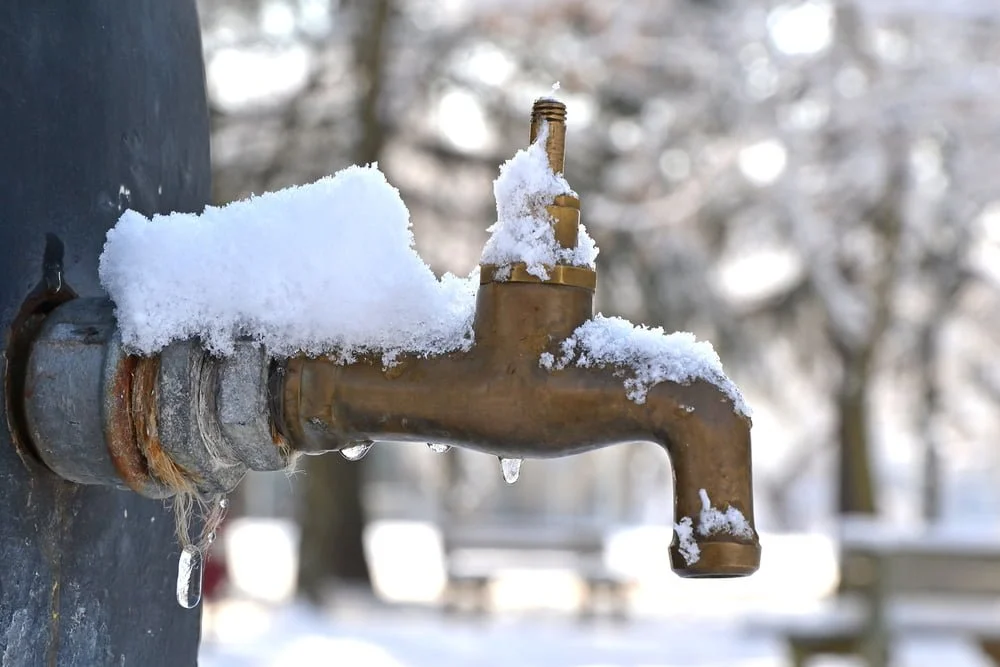Advice for Avoiding Frozen Plumbing in Cold Weather: Professional Advice
Advice for Avoiding Frozen Plumbing in Cold Weather: Professional Advice
Blog Article
We've stumbled upon this great article involving Prevent Frozen Pipes down the page on the net and felt it made good sense to quickly share it with you over here.

Winter can wreak havoc on your pipes, especially by freezing pipes. Below's exactly how to prevent it from occurring and what to do if it does.
Introduction
As temperature levels drop, the threat of frozen pipes rises, possibly resulting in expensive repairs and water damages. Comprehending exactly how to avoid frozen pipelines is important for house owners in cold climates.
Avoidance Tips
Protecting susceptible pipes
Cover pipelines in insulation sleeves or use heat tape to shield them from freezing temperature levels. Focus on pipes in unheated or exterior locations of the home.
Home heating strategies
Maintain interior areas appropriately warmed, particularly locations with plumbing. Open cabinet doors to permit warm air to circulate around pipes under sinks.
How to determine frozen pipelines
Look for reduced water circulation from faucets, uncommon smells or noises from pipelines, and noticeable frost on subjected pipes.
Long-Term Solutions
Architectural modifications
Think about rerouting pipes far from exterior walls or unheated locations. Add additional insulation to attics, basements, and crawl spaces.
Updating insulation
Buy top notch insulation for pipes, attic rooms, and wall surfaces. Proper insulation aids keep regular temperatures and decreases the threat of icy pipes.
Securing Exterior Pipes
Yard hoses and outdoor taps
Detach and drain pipes garden hoses prior to winter months. Set up frost-proof faucets or cover outdoor taps with protected caps.
Recognizing Icy Pipelines
What triggers pipes to freeze?
Pipes freeze when subjected to temperatures below 32 ° F (0 ° C) for expanded durations. As water inside the pipes ices up, it increases, taxing the pipe wall surfaces and possibly causing them to burst.
Risks and problems
Frozen pipes can lead to supply of water interruptions, residential property damage, and costly repair services. Burst pipelines can flood homes and trigger substantial structural damages.
Indicators of Frozen Piping
Recognizing frozen pipelines early can stop them from breaking.
What to Do If Your Pipes Freeze
Immediate activities to take
If you presume frozen pipelines, keep taps open up to soothe pressure as the ice melts. Use a hairdryer or towels soaked in warm water to thaw pipes slowly.
Verdict
Protecting against icy pipes requires proactive steps and fast reactions. By comprehending the causes, indicators, and preventive measures, home owners can secure their pipes throughout winter.
5 Ways to Prevent Frozen Pipes
Drain Outdoor Faucets and Disconnect Hoses
First, close the shut-off valve that controls the flow of water in the pipe to your outdoor faucet. Then, head outside to disconnect and drain your hose and open the outdoor faucet to allow the water to completely drain out of the line. Turn off the faucet when done. Finally, head back to the shut-off valve and drain the remaining water inside the pipe into a bucket or container. Additionally, if you have a home irrigation system, you should consider hiring an expert to clear the system of water each year.
Insulate Pipes
One of the best and most cost-effective methods for preventing frozen water pipes is to wrap your pipes with insulation. This is especially important for areas in your home that aren’t exposed to heat, such as an attic. We suggest using foam sleeves, which can typically be found at your local hardware store.
Keep Heat Running at 65
Your pipes are located inside your walls, and the temperature there is much colder than the rest of the house. To prevent your pipes from freezing, The Insurance Information Institute suggests that you keep your home heated to at least 65 degrees, even when traveling. You may want to invest in smart devices that can keep an eye on the temperature in your home while you’re away.
Leave Water Dripping
Moving water — even a small trickle — can prevent ice from forming inside your pipes. When freezing temps are imminent, start a drip of water from all faucets that serve exposed pipes. Leaving a few faucets running will also help relieve pressure inside the pipes and help prevent a rupture if the water inside freezes.
Open Cupboard Doors
Warm your kitchen and bathroom pipes by opening cupboards and vanities. You should also leave your interior doors ajar to help warm air circulate evenly throughout your home.

Do you appreciate reading about Preventing and dealing with frozen pipes? Place a comment below. We'd be pleased to listen to your feelings about this entry. We are looking forward to see you back again later on. So long as you enjoyed reading our page kindly consider to share it. Thank you for being here. Please come visit our blog back soon.
Get Your Estimate Now Report this page